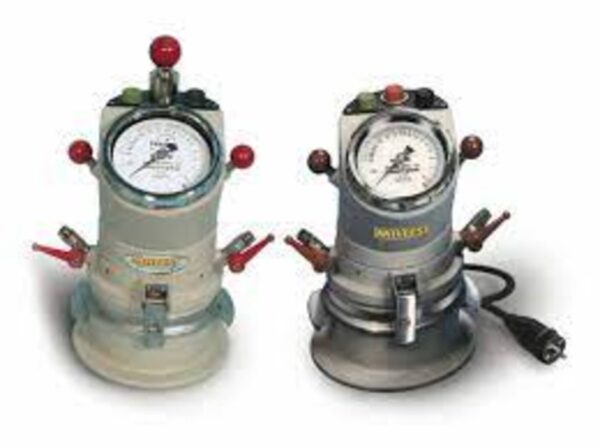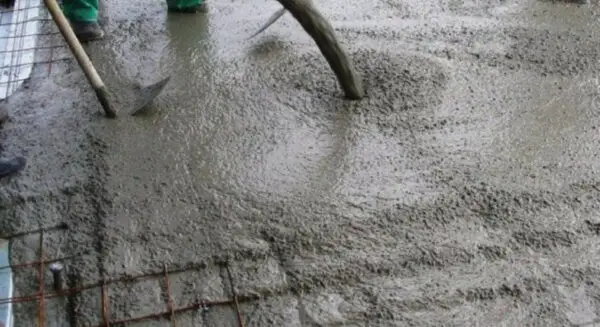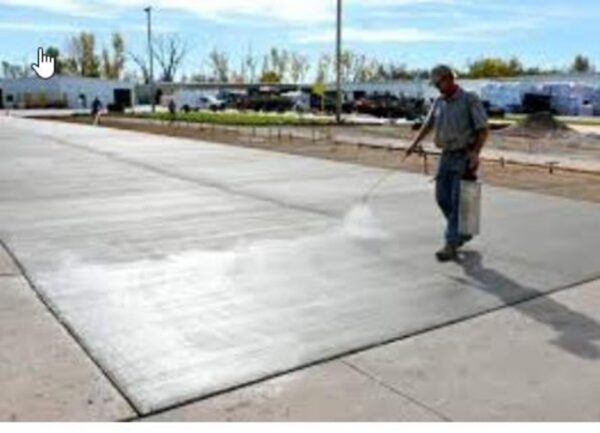Hand mixing concrete is a useful skill for DIY enthusiasts and professionals working on small-scale projects. While machine mixing is more efficient for larger jobs, hand mixing allows for greater control and customization when working with smaller quantities of concrete. In this article, we’ll explore the best tools, techniques, and tips for hand mixing concrete effectively.
Best Tools for Hand Mixing Concrete
Hand mixing concrete is a common practice for small-scale projects in civil engineering, as it allows for greater control and customization of the mix. To ensure efficient and effective hand mixing, it’s crucial to have the right tools on hand.
1. Mixing Tub or Wheelbarrow
A sturdy mixing tub or wheelbarrow is the foundation of your hand mixing setup. Look for a tub or wheelbarrow with a capacity suitable for your project size, and ensure that it’s made of durable materials that can withstand the abrasive nature of concrete.

2. Shovel
A high-quality shovel is essential for measuring and adding ingredients to your mixing tub or wheelbarrow. Choose a shovel with a comfortable handle and a sturdy blade that can withstand the weight and abrasiveness of the concrete mix. A square-point shovel is generally preferred for its ability to scoop and measure materials accurately.
3. Hoe
A hoe is the primary mixing tool for hand mixing concrete. Look for a hoe with a long, durable handle and a strong, wide blade. The blade should be slightly curved to allow for efficient mixing and blending of the ingredients. A mortar hoe, with its distinctive hole in the blade, is particularly well-suited for hand mixing concrete, as it helps break up clumps and ensures a more uniform mix.
4. Measuring Bucket
Accurate proportioning of ingredients is crucial for achieving the desired strength and consistency of your concrete mix. A measuring bucket allows you to precisely measure the amounts of cement, sand, and aggregate needed for your project. Look for a bucket with clear, easy-to-read measurements and a sturdy handle for easy pouring.
5. Water Source and Hose
A reliable water source and a hose with an adjustable nozzle are essential for adding water to your concrete mix and cleaning your tools after use. An adjustable nozzle allows you to control the water flow, making it easier to achieve the desired consistency of your mix.
6. Mixing Board or Tarp
A mixing board or tarp provides a clean, flat surface for hand mixing concrete when a mixing tub or wheelbarrow is not available or practical. A piece of plywood or a heavy-duty tarp can serve this purpose well. Ensure that the surface is level and free from debris that could contaminate your mix.
7. Safety Gear
Hand mixing concrete involves working with abrasive materials and potentially hazardous dust. To protect yourself, always wear appropriate safety gear, including gloves, safety glasses, a dust mask, and sturdy boots. Sturdy boots with good traction ensure stable footing while working with heavy materials.
Proportioning Materials for Hand Mixed Concrete
Proper proportioning of materials is crucial for achieving the desired strength, durability, and workability of hand mixed concrete. In civil engineering projects, the right mix proportions ensure that the concrete can withstand the intended loads and environmental conditions.
Understanding the Basic Components
Concrete is typically composed of four main ingredients:
- Cement
- Sand (fine aggregate)
- Gravel or crushed stone (coarse aggregate)
- Water
The proportion of these ingredients determines the properties of the resulting concrete mix.

Determining the Mix Ratio
The most common mix ratio for general-purpose concrete is 1:2:3 (cement:sand:gravel) by volume, with a water-to-cement ratio of 0.5. This means that for every one part of cement, you’ll need two parts of sand and three parts of gravel, and half a part of water.
However, the ideal mix ratio may vary depending on the specific requirements of your project, such as the desired strength, workability, and exposure conditions. For example:
- A 1:1.5:3 mix ratio with a water-to-cement ratio of 0.4 will result in a stronger concrete suitable for structures exposed to harsh conditions.
- A 1:2.5:4 mix ratio with a water-to-cement ratio of 0.6 will yield a more workable concrete ideal for projects requiring intricate shapes or smooth finishes.
Measuring the Ingredients
To ensure accurate proportioning, use a measuring container with known volumes, such as a bucket or a wheelbarrow. Measure the dry ingredients (cement, sand, and gravel) first, and then add water gradually until you achieve the desired consistency.
It’s essential to use consistent measuring methods throughout the project to maintain uniform mix proportions. If using a shovel or a hoe for measuring, ensure that each scoop is level and filled to the same extent.
Adjusting the Mix Proportions
In some cases, you may need to adjust the mix proportions to accommodate specific project requirements or site conditions. For example:
- If the concrete will be exposed to freezing and thawing cycles, you may need to increase the cement content and reduce the water-to-cement ratio to improve durability.
- If the concrete will be placed in congested areas or around reinforcement, you may need to increase the sand content and reduce the gravel size to improve workability.
- If the available materials have different moisture contents or gradings than assumed in the initial mix design, you may need to adjust the proportions to maintain the desired concrete properties.
When making adjustments, it’s essential to maintain the overall volume proportions and water-to-cement ratio as closely as possible to the original mix design. Small incremental changes are preferable to drastic modifications, as they allow for better control over the final concrete properties.
Hand Mixing Concrete Procedure
The procedure for hand mixing concrete involves the following steps:
- Measure and add the dry ingredients to the mixing tub or wheelbarrow
- Create a well in the center of the dry mix
- Gradually add water while mixing with the hoe
- Continue mixing until the concrete reaches a uniform consistency
- Perform a slump test to ensure the desired consistency
- Pour and place the concrete as needed
Tips for Hand Mixing Concrete Efficiently
To hand mix concrete efficiently, consider the following tips:
- Use the right tools for the job
- Measure the ingredients accurately
- Mix the concrete thoroughly to ensure a uniform consistency
- Add water gradually to avoid over-wetting the mix
- Work in small batches to prevent the concrete from setting before you can use it
- Clean your tools and equipment promptly after use
Troubleshooting Issues with Hand Mixed Concrete
Common issues with include:
- Inconsistent mixing: Ensure that the ingredients are thoroughly combined and the mix has a uniform consistency.
- Excessive slump: If the concrete is too runny, add more dry ingredients to stiffen the mix.
- Insufficient slump: If the concrete is too stiff, add more water incrementally until the desired consistency is achieved.
- Rapid setting: Work in smaller batches and place the concrete promptly to avoid premature setting.
Conclusion
Hand mixing concrete is a valuable skill for small-scale projects, offering greater control and customization compared to machine mixing.
By understanding the best tools, techniques, proportioning, consistency, and curing methods, you can successfully hand mix concrete for various applications. Remember to work efficiently, troubleshoot issues promptly, and always prioritize safety when working with concrete materials.
FAQ
What is the best mix ratio for hand mixed concrete?
The best mix ratio for hand mixed concrete depends on the specific requirements of your project. However, a common general-purpose mix ratio is 1:2:3 (cement:sand:gravel) by volume, with a water-to-cement ratio of 0.5. This means that for every one part of cement, you’ll need two parts of sand, three parts of gravel, and half a part of water.
How do I achieve the right consistency when hand mixing concrete?
To achieve the right consistency when hand mixing concrete, start by thoroughly mixing the dry ingredients (cement, sand, and gravel) until they are evenly distributed. Then, gradually add water while continuing to mix, until the concrete reaches a uniform, workable consistency.
A good way to test the consistency is by using the slump test. Fill a standard slump cone with the mixed concrete, remove the cone, and measure the slump (the distance the concrete settles). For most hand mixed applications, a slump of 2-4 inches (5-10 cm) is desirable.






